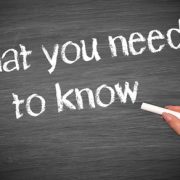Owners of Self-Directed IRAs Benefit from Japanese Pension Fund Shift to Alternative Asset Classes
Internationally, the ‘smart money’ is starting to move more toward alternative asset classes, and away from traditional fixed income assets. That means that IRA investors are in the catbird’s seat, as institutional money begins to flow in their Self-Directed IRAs direction.
A new report from J.P. Morgan indicates that the traditionally conservative, staid pension funds in Japan have allocated a whopping 17.1 percent to alternative investment classes as of last March (2018), up from just 11.4 percent as of just five years ago. The survey also found that a majority of these pension funds – 60 percent – intended to increase their exposure to alternative investment classes over the next year.
Meanwhile, Japanese pension funds dumped Japanese government bonds – reducing their exposure to 21.7 percent, the lowest allocation to government debt in the last 11 years – going back to the beginning of the survey.
Alternative Assets Going Mainstream in Japan
It is no mystery why: Years of government policy promoting growth at the risk of inflation and at the expense of savers resulted in the 10-year government issue yielding just 0.02 percent!
“We expect to see investors continue to ‘push the envelope’ on alternatives to boost return and increase portfolio resilience,” said Akira Kunikyo, an institutional investment specialist with J.P. Morgan to editors of the Financial Times.
Those are precisely the two biggest reasons individual investors should consider increasing their own exposure to alternative asset classes within their retirement portfolios.
These accounts, including Self-Directed IRAs, 401(K)s, Self-Directed SEP IRAs, Self-Directed SIMPLE IRAs and even Self-Directed CESAs (Coverdell Education Savings Accounts) and Self-Directed HSAs (health savings accounts) allow individual investors to direct their own retirement assets into alternative asset classes just as large institutions do. Examples of alternative asset classes include:
- Direct ownership of real estate
- REITs
- Private equity
- Venture capital
- Hard money lending
- Oil and gas
- Limited partnerships and MLPs
- Tax liens and certificates
- Land banking
- Private lending
- Hedge funds
“Alternative assets have truly become a mainstream asset for Japanese pension funds, adds Kunikyo.
Often, these alternative asset classes can be very illiquid. That is a feature, not a bug, as Self-Directed IRA investors usually have very long-time horizons. There is simply no need to give up expected return in exchange for liquidity they do not need. When you have years or decades before you are likely to need to access the money, an illiquid 6 percent is better than a liquid 2 percent.
The long-time horizons of Self-Directed IRAs for most investors make them ideal homes for alternative asset classes: There is lots of time for compounding to take place, relatively unmolested by income taxes, dividend taxes and capital gains on any trades. Rental income in a Self-Directed Roth IRA, for example, is tax-free, provided the assets have been in the Self-Directed Roth IRA for at least five years. And even in traditional Self-Directed IRAs, taxes on growth and income are deferred until you begin taking money out of the account, generally in retirement. (There may be some exposure to unrelated debt income tax if you borrow money within your retirement account to invest with, depending on the circumstances.)
Interested in learning more about Self-Directed IRAs? Contact American IRA, LLC at 866-7500-IRA (472) for a free consultation. Download our free guides or visit us online at www.AmericanIRA.com.




